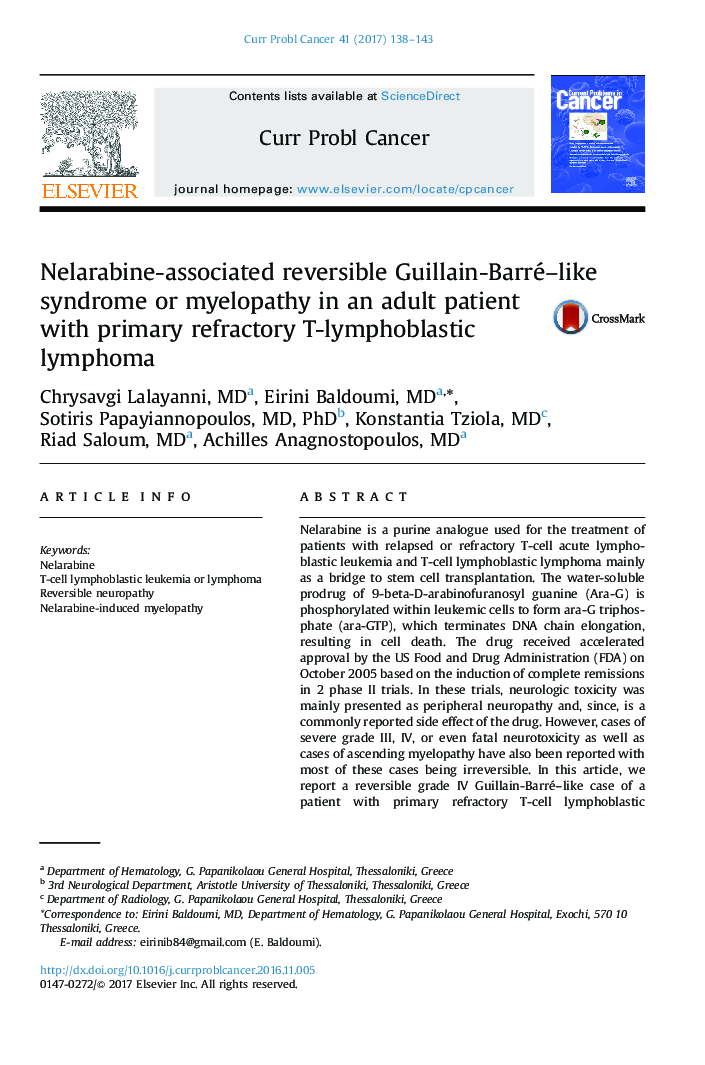| Article ID | Journal | Published Year | Pages | File Type |
|---|---|---|---|---|
| 5664238 | Current Problems in Cancer | 2017 | 6 Pages |
Nelarabine is a purine analogue used for the treatment of patients with relapsed or refractory T-cell acute lymphoblastic leukemia and T-cell lymphoblastic lymphoma mainly as a bridge to stem cell transplantation. The water-soluble prodrug of 9-beta-D-arabinofuranosyl guanine (Ara-G) is phosphorylated within leukemic cells to form ara-G triphosphate (ara-GTP), which terminates DNA chain elongation, resulting in cell death. The drug received accelerated approval by the US Food and Drug Administration (FDA) on October 2005 based on the induction of complete remissions in 2 phase II trials. In these trials, neurologic toxicity was mainly presented as peripheral neuropathy and, since, is a commonly reported side effect of the drug. However, cases of severe grade III, IV, or even fatal neurotoxicity as well as cases of ascending myelopathy have also been reported with most of these cases being irreversible. In this article, we report a reversible grade IV Guillain-Barré-like case of a patient with primary refractory T-cell lymphoblastic lymphoma treated with nelarabine. Guillain-Barré-like syndrome in this patient coexisted with toxic myelopathy which affected the whole spine. The pathogenetic mechanisms and genetic predisposition for nelarabine-associated neurotoxicity is still unknown. The role of the immune system and the patient's genetic background are under investigation along with considerations on the right treatment of the syndrome. Gaining a better understanding in the contributing mechanisms will help us to recognize individuals in danger for neurotoxicity and will lead to the prompt treatment of this complication. Yet, it can be concluded from the present case and literature review that high-dose cytarabine regimens and intrathecal installations should be avoided in close time proximity with nelarabine treatment, as they could enhance neurotoxicity.
